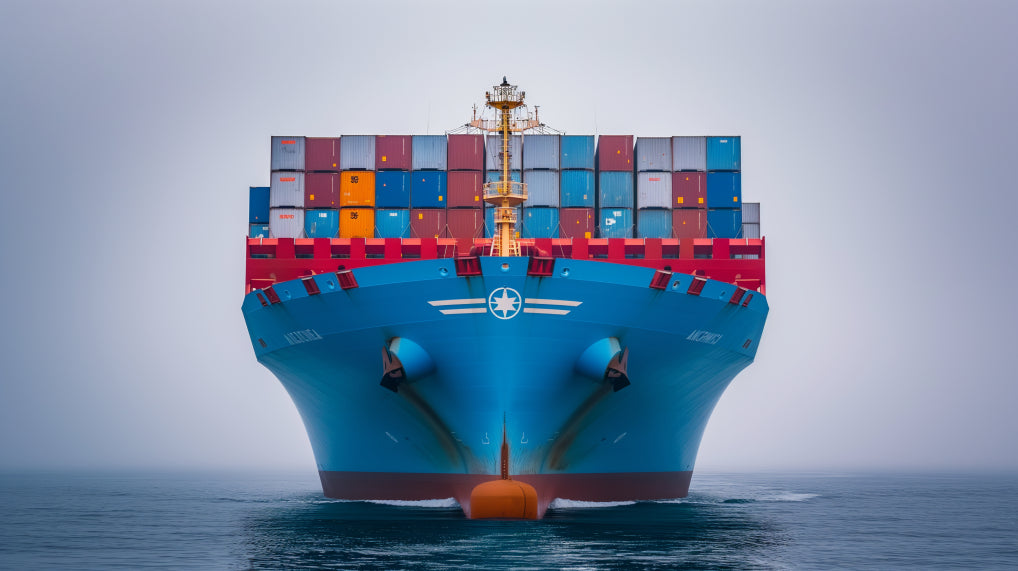
Comprehensive Canadian Shipping Containers Buyers Guide by Stlbx - Chapter 3 | Understanding Demand, Supply and Pricing
Share
Navigating the Canadian Market: A Comprehensive Guide to Shipping Container Dynamics
The Canadian market is a bustling hub for trade, characterized by its intricate balance of demand and supply, especially in the shipping container sector. This post delves deep into the heart of Canada's shipping container market, shedding light on the pivotal roles played by key ports and cities, and how they significantly sway both container availability and pricing.
Demand Trends in the Shipping Container Market
In recent years, Canada has seen a remarkable uptick in the demand for shipping containers. This surge is primarily fueled by the robust growth in international trade and the expanding e-commerce sector. As businesses strive to keep pace with market demands, the need for efficient and reliable shipping solutions has never been more critical.
Supply Sources: The Backbone of the Market
The supply of shipping containers in Canada is influenced by a complex network of factors, including manufacturing rates, international shipping policies, and the strategic positioning of containers at major ports. Understanding these supply sources is essential for businesses looking to navigate the market successfully.
The Strategic Importance of Major Ports
Canada's major ports, such as Vancouver, Montreal, and Toronto, play a crucial role in the logistics network. Their strategic locations not only facilitate international trade but also impact the distribution and availability of shipping containers throughout the country. These ports serve as critical nodes in the supply chain, ensuring the smooth flow of goods both in and out of Canada.
Cities and Their Impact on Container Pricing
The proximity to major cities is another vital aspect that influences container pricing. Cities with significant commercial activity and high demand for shipping services tend to experience higher container prices. This price variation is a direct result of the logistics involved in transporting containers to and from these urban centers, underscoring the importance of strategic planning in logistics management.
The Ripple Effects of Global Supply Chain Disruptions
Recent years have underscored the vulnerability of global supply chains to disruptions caused by pandemics, geopolitical conflicts, and trade wars. These events can lead to abrupt shortages in shipping container availability, causing ripple effects through markets worldwide, including Canada. Such unpredictability demands agile and resilient supply chain strategies to mitigate impacts on shipping efficiency and costs.
Regional Insights: From Victoria vs Toronto vs Ottawa
The diversity of Canada's geography and infrastructure significantly influences shipping container logistics and pricing.
-
Victoria, BC: The Cost of Isolation
For businesses in Victoria, BC, the reliance on ferries for transporting containers adds a substantial burden, potentially increasing costs by up to $2,000 per container. This unique challenge underscores the need for strategic planning in logistics to manage expenses effectively. -
Toronto: A Hub of Abundance
In contrast, Toronto benefits from its status as a central transport hub, resulting in lower container prices due to increased supply. This advantageous position supports more cost-effective logistics operations for businesses leveraging Toronto's extensive transport network. -
Ottawa: The Price of Distance
For the nation's capital, Ottawa, the distance from major port cities like Montreal or Toronto introduces significant trucking costs, which can hike the price of containers by as much as $1,300. This factor highlights the importance of strategic location decisions in minimizing logistics costs.
Future Projections: Navigating the Horizon of 2024-2025
Looking ahead, the market for shipping containers is expected to experience fluctuations influenced by ongoing global economic conditions and trade dynamics. Industry analyses suggest a trend of gradual stabilization in container prices as supply chains adapt to post-pandemic realities and geopolitical tensions. However, businesses should prepare for continued volatility and seek to enhance their supply chain flexibility to navigate potential challenges effectively.
Conclusion: Strategizing for Success in a Dynamic Market
The Canadian shipping container market, shaped by both regional particularities and global trends, presents a multifaceted landscape for businesses. By understanding the impact of global supply chain disruptions, recognizing the unique challenges and advantages of different regions, and staying informed on future market projections, companies can develop robust strategies to thrive. Amidst the unpredictability of global events and the evolving market dynamics, agility, foresight, and strategic planning emerge as the key pillars supporting success in Canada's vibrant trade environment.
